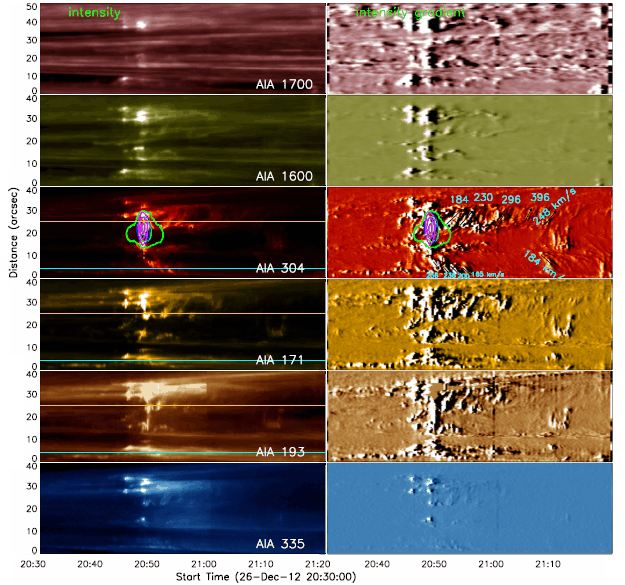We have explored the bi-directional flows in a C-class solar flare observed by Solar Dynamic Observatory Atmospheric Imaging Assembly (SDO/AIA) on 2012 December 26. This event occurs in a curved magnetic loop connecting a pair of negative and positive fields. RHESSI observations show a X-ray source in 3–25 keV stayed at the loop top during the flare. High-cadence AIA observations exhibit many flows movement intermittently along the flare loop. Many bi-directional flows are identified as the oblique streaks on the intensity-gradient space-time slices during the flare lifetime. They almost start from the same position near the loop top, where the X-ray emission is bright in 3–25 keV. Then they move toward the positive and the negative polarity footpoints simultaneously. Their average speed is directly measured about 230 km/s, and they exhibit a typical quasi-period of about 3 minutes. The characteristics of these flows, such as bi-directional, simultaneous, symmetrical and quasi-periodic, are the observational constraints for acceleration theories. 
By with NING Zhongjun Figure 1 Intensity (left) and intensity-gradient (right) space-time slices along the curved slit from FP1 (bottom) to FP2(top) at all AIA 6 wavelengths. The green and yellow contours are from the RHESSI brightness in 3–6 keV and 6–12 keV. The arrows marked several flows and their speeds are labeled. The link of this paper is: http://xueshu.baidu.com/s?wd=paperuri%3A%283e27bfdec3a7b897a54eeeae4c1e494c%29&filter=sc_long_sign&tn=SE_xueshusource_2kduw22v&sc_vurl=http%3A%2F%2Flink.springer.com%2Farticle%2F10.1007%2Fs10509-015-2606-y&ie=utf-8 (Information Source: Purple Mountain Observatory, CAS) |

